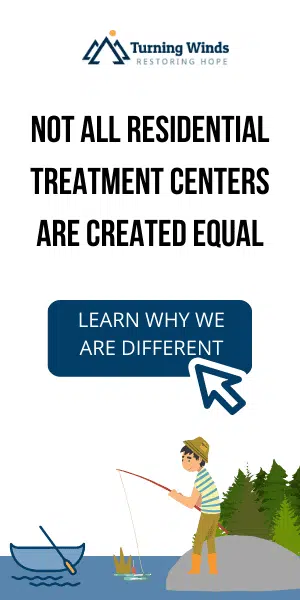Updated on December 8, 2022
The Difference Between Bullying and Cyberbullying
The only difference between bullying and cyberbullying is that bullying is done face-to-face. In contrast, cyberbullying is done online, usually on social media sites like TikTok, WhatsApp, or Instagram. It can also be done in private school groups or via texting.
Bullying and harassment online or face to face involve one or more teens insulting, threatening, and demeaning another teen verbally and/or physically.
We hear stories about the devastating consequences of bullying and cyberbullying on the news nearly daily, from teens developing serious mental health issues to running away from home to having suicidal thoughts or worse.
There are no easy answers to the question of how to stop bullying. However, recognizing signs that a child is being bullied either at school or online is essential for parents of adolescents experiencing the trials and tribulations of teenage life.
Learning how to start a discussion with a teenager who is being bullied or one who is doing the bullying is the second essential step parents must take to stop bullying from destroying their child’s mental and emotional health.
bul.ly.ing
Continued pscyhological, verbal, or physical attacks. Intimidation or harassment of someone who cannot defend themselves properly.
Definition of bullying
Vital Statistics About Bullying and Cyberbullying Kids
- Students who are victims of cyberbullying or bullying are nearly two times more likely to attempt suicide.
- About one in five children and adolescents in the U.S. experience serious mental health concerns related to social isolation, trauma, and bullying. Unfortunately, 20% of them actually receive the help they need.
- Victims of bullying are two to nine times more likely to have suicidal ideations compared to kids who are not bullied. This same study also concluded that girls between 10 and 14 years old are at an even higher risk for suicide.
- Approximately 30 percent of students are either victims of bullying or bullies themselves.
- An estimated 160,000 kids remain home when they should be in school because they are afraid of being bullied.
- The majority of kids bullied are called names, insulted, or made fun of. Other types of bullying include being the center of rumors, being shoved/pushed, spit on, or shoved, or being deliberately excluded from school or after-school activities.
- One in five preteens between nine and 12 years old say they have been cyberbullied or witnessed cyberbullying online.
2X More Likely to Commit Suicide
Students who are victims of cyberbullying or bullying are nearly two times more likely to attempt suicide.
1 in 5 has Mental Health Issues
About one in five children and adolescents in the U.S. experience serious mental health concerns related to social isolation, trauma, and bullying.
What are the Different Types of Bullying?
Physical
Bullying doesn’t have to involve just one child hitting another. Pushing, tripping, pulling hair, and simply touching another person aggressively are also forms of physical bullying.
Verbal
Teasing, name-calling, and issuing verbal threats (“I’m going to punch you”!) are the most common types of verbal bullying. Verbal bullying also includes written notes left specifically for the victim that is insulting and demeaning.
Sexual
Boys over 10 years old are the most frequent culprits of sexual bullying. Making crude gestures, telling sexual jokes, grabbing/touching another person’s breasts or genitals, and spreading rumors about a victim’s sexual orientation or habits are forms of sexual bullying.
Prejudicial
Bullying someone based on their religion, race, sexual orientation, and/or ethnicity is called prejudicial bullying. Teens demean and insult others who are “different” from them and have been taught to believe stereotypes that are usually perpetuated by their family members, friends, and social media.
Relational (Social)
When bullies spread rumors, deliberately ostracize them from social situations, or consistently try to embarrass their victims in public, this type of bullying is called relational bullying. Unlike physical and verbal bullying, relational bullying may not be as apparent to outsiders.
Online bullying is when someone says or does mean things on the Internet to hurt someone else’s feelings. It’s different from regular bullying because it happens through devices like phones or computers instead of in person.
It includes posting something about you on social media that’s meant to make people laugh at you instead of with you. Or mean emails or text messages about something personal about yourself or your family members that are private and not meant for other people to see.
The Effects of Bullying on Mental Health
Hundreds of research studies have shown the short and long-term consequences of bullying on adolescents can be devastating to their mental and emotional health.
Alcoholism, substance abuse, recurring suicide attempts, dropping out of high school, and chronic depression and PTSD have all been reported in young adults who were bullied as children or teenagers.
Neuroimaging scans further indicate that bullying can actually impact the brain functioning of adolescents, leading to reduced blood flow to brain cells essential for cognitive development.

How to Stop Bullying: Tips for Parents
Do you suspect your teen is being bullied?
Each child reacts differently to being victimized by a bully. However, there are shared signs of being bullied that parents should watch for if they think their teen is being bullied:
- Unexplained appearance of bruises, scratches, or red marks on the child’s body
- Coming home from school with torn clothing or missing clothing
- Complaints of frequent stomach aches, headaches, or just feeling sick to stay home from school.
- Eating an unusually large amount of food as soon as the child gets home from school (could indicate a bully is stealing the child’s lunch or lunch money).
- Having nightmares, insomnia, difficulty sleeping
- Uncharacteristic avoidance of social activities/not hanging out with friends
If a parent believes their child is the victim of a bully–either at school or online–the first thing to do is to remain calm and make a plan to talk with their child and possibly the school staff about bullying.
Approach the conversation by telling them you have noticed things about them that seem out-of-the-ordinary and want to make sure everything is OK.
Depending on how the child responds, you could then ask if somebody is bothering them at school. Gently continue expressing your concern without becoming upset or demanding.
Once your child admits to being bullied, there are several options to consider:
- Contact the school and request a meeting with the child’s teacher and/or principal.
- Contact the parents of the bully (or bullies) to let them know what is happening.
- Take screenshots of instances of cyberbullying from your child’s cell phone. If the cyberbully goes to your child’s school, these screenshots can be proof of the bully’s online threats toward your child.
Parents should be aware that if the school does not take action after they inform them, their child is being bullied. Their child continues being victimized. There are state and federal laws that mandate schools take action or face civil and/or criminal litigation. Physical bullying may need the involvement of law enforcement if the parents of the bully refuse to intervene.

All states except Montana have implemented anti-bullying laws to help reduce and eliminate bullying in schools.
Schools have a responsibility to take action.
When bullying involves: race, nationality, color, sex (including LGBTQ and gender identity), age, disability, or religion is considered a hate crime and can be prosecuted under federal law.
Bullying and cyberbullying can leave you feeling devastated and powerless. This hurtful behavior causes victims to suffer severe emotional distress. And what’s worse? It’s on the rise because of the effects technology has on behavior.
Technology makes it easy for bullies to attack their targets anonymously and without reproach.
There are many online resources with advice on dealing with bullies and helping kids experiencing cyberbullying. Remember, any child can be bullied or be the bully.
Studies on bullying and its impact on the brain and mental health have identified teen profiles with characteristics of bullies and victims. While we know that bullies tend to have more aggressive traits, the fact is that any child can be a bully or be bullied.
14 Signs Your Child May Be the Bully
The real question: how do you know if your child is being bullied or if they’re the one doing it? Since there’s no specific profile, a child can be either. Fortunately, plenty of warning signs tell us whether the child is being victimized by bullies or if they are the bully.
- Your child becomes moody or withdrawn.
- Your child has a lot of arguments with their friends and or siblings.
- You notice bruises on your child that they can’t explain away easily (e.g., falling.)
- Other people mention seeing your child being mean to someone else (in person or online).
- Your child starts losing interest in activities that used to be important to them (like sports or music).
- You notice that they are being mean or aggressive toward others.
- Your child is getting into trouble at school more often than before (e.g., getting written up for disciplinary infractions like talking back to teachers or starting fights).
- They make fun of someone’s appearance, weight, race, religion, gender identity, sexual orientation, or disability.
- Use insults or putdowns to make other kids feel bad about themselves.
- Use threats or physical violence toward other kids.
- They spend a lot of time using social media, devices, and messaging apps.
- You notice they are sending mean text messages or posting hurtful things.
- They suddenly have a lot of “new friends” in real life or online, but you don’t know anything about them or their families. These friends could be part of an online group or community involved in nefarious activities.
- They have anger issues and resentment, like getting angry when someone doesn’t do what they want them to or having trouble managing or controlling their feelings.

Why Do Children Bully?
Some children become bullies because they feel like they lack attention at home. They have anger issues because they lose a parent or there is drug or alcohol use at home.
Perhaps they are modeling their behavior after someone in their family or a role model who is aggressive or has difficulties with conflicts. While there are experts that believe the behavior is learned at home. This is not proven.
The truth is that some children have aggressive tendencies or are more prone to not showing compassion or respect. Often, we see that children with emotional issues, conduct, or behavioral disorders do not know when they are acting inappropriately.
As we discussed earlier, when children are bullied, they feel powerless, resulting in sadness, anxiety, anger, fear, and helplessness. These feelings and emotions are overwhelming but also crucial drivers for acting out. Turning that anger toward others is a way for these kids to regain control. Thus the victim of the bully becomes the victimizer.
Why? Bullying gives them a sense of control, covers up their insecurities, and makes up for low self-esteem.
43%
of transgender youth have been bullied on school property.
What should you do if your child is the one doing the bullying?
It’s not easy to realize that your child is the harasser, it is something a parent has to confront head-on, and it cannot be ignored. When we don’t act on this knowledge, the behavior worsens. Your child will not grow out of this phase without help!
Teach your child why what they are doing is wrong. Make sure to set appropriate consequences for the next time they bully someone else. Consequences could be anything from taking away their electronics for a day or two to grounding them for a week or more.
It is also good to keep in mind that while is rare, in some cases, the child may not realize that they are being bullies, and if they know, they might need to learn how to stop themselves and manage their emotions better.
We encourage you to be vigilant about your child’s digital footprint. Understanding the digital print left by your kids on social media and knowing who they are talking to on messaging and gaming apps is the first step in online bullying prevention.
29%
of gay or lesbian youth have been bullied on school property, compared to 17% of straight youth
Preventing and Stopping Bullying
- Talk to them about how it feels when someone feels left out or excluded by their peers.
- Discuss their feelings when another person’s words or actions are hurtful.
- Reinforce the importance of being kind and understanding to others.
- Help them see that their actions are causing emotional pain or distress for others.
Don’t just tell your child “no” or demand they “stop bullying!” Offer support, guidance, and encouragement in their efforts to stop. Get them help! Schedule an appointment with a psychologist, counselor, or therapist to discuss the behavior and how to change it.
In conclusion
Parents need to understand that their children go through various developmental phases. It’s not easy being a kid these days. With the impact and pressure of social media, bullying often happens because the child feels so many emotions and doesn’t know how or have the skills to deal with them. It is easier to find someone to blame for their problems.
To prevent bullying behavior maintain an open dialogue with your children about what’s happening in school and their life. This is harder to do with high school students than with elementary or middle school children, but it is crucial.
Ask about their friends, who they like and dislike, how things are going at recess, clubs, sports, etc.. If your child opens up to you, then great! You can continue the conversation from there. If your child does not want to discuss it, don’t push it. Try other ways to approach it.
Encourage your child to tell you when they are getting bullied so you can step in when needed. If your child is the aggressor and bullies others, stay the course, and be consistent with consequences.
If your teenager’s behavior is out of control and they are in danger or hurting someone or themselves, seek professional help. When counseling, therapy, and medications are not enough, it’s time to consider residential treatment options.
Resources for Parents
Federal government resources for parents of children who are being bullied:
Is Your Child in Need of An Intervention?
When everything you try fails, the answer is likely an intervention and a therapeutic residential treatment facility.
If you are not sure and would like help or more information. Please Click the Button below to speak to a family advocate and learn more about residential treatment and intervention options.
Yes, I want to speak to speak to a family advocate


















